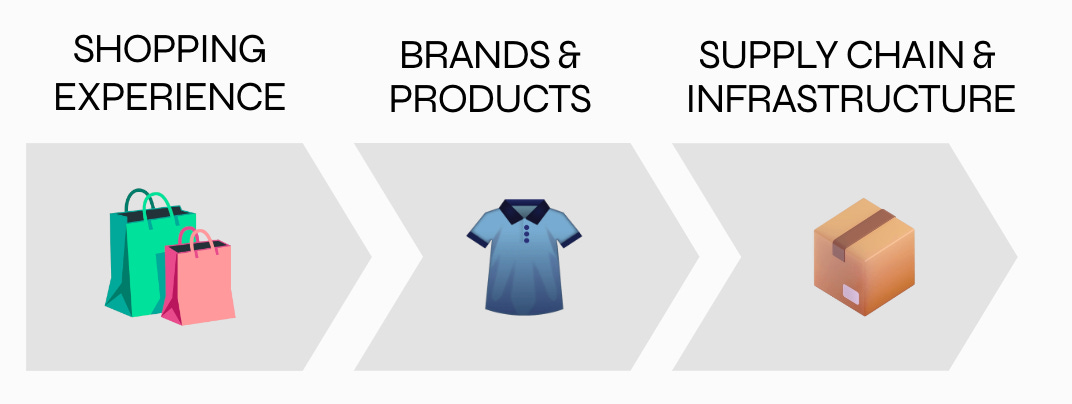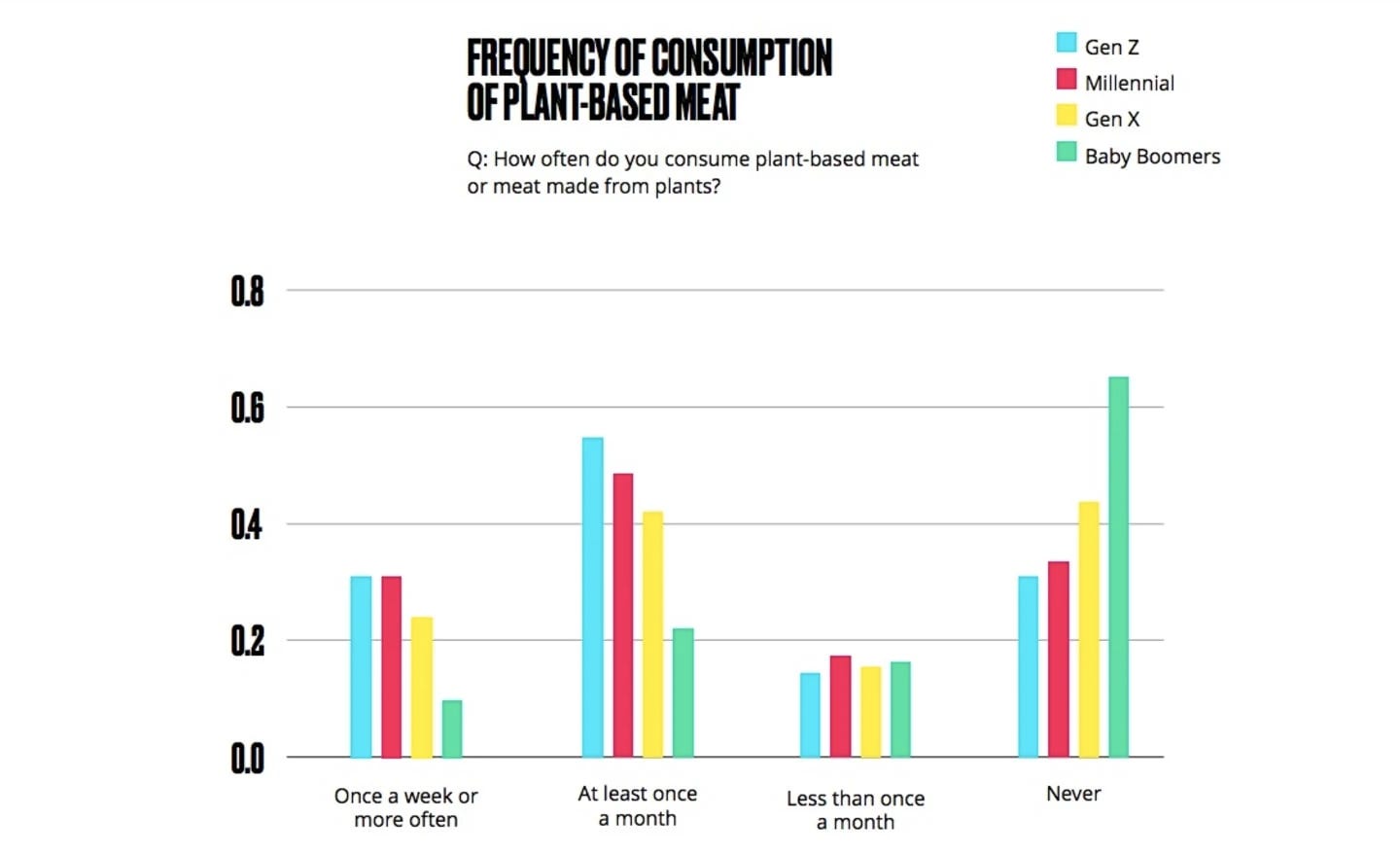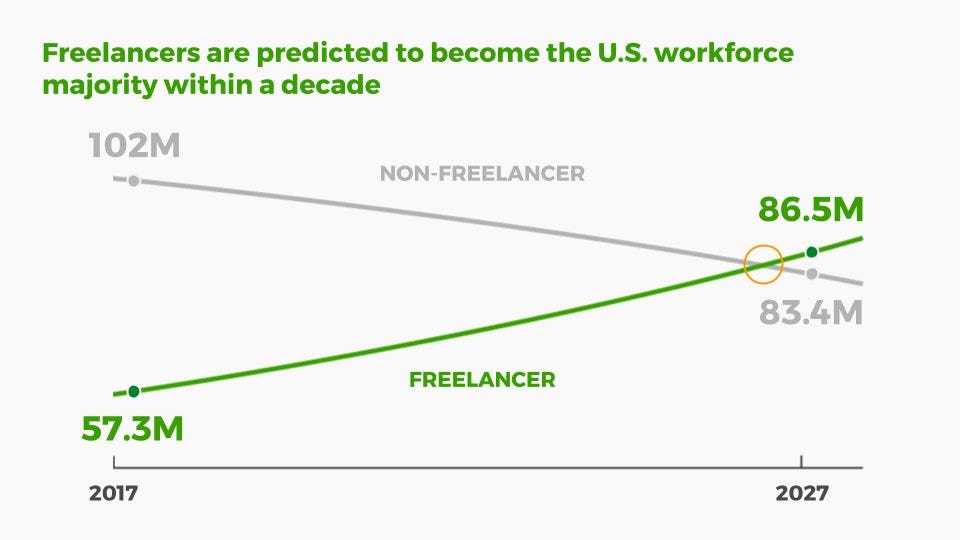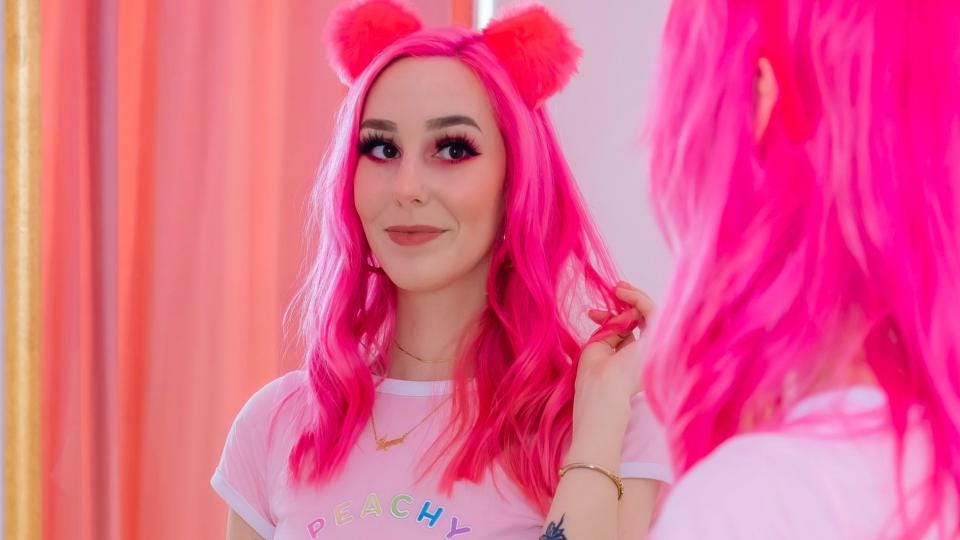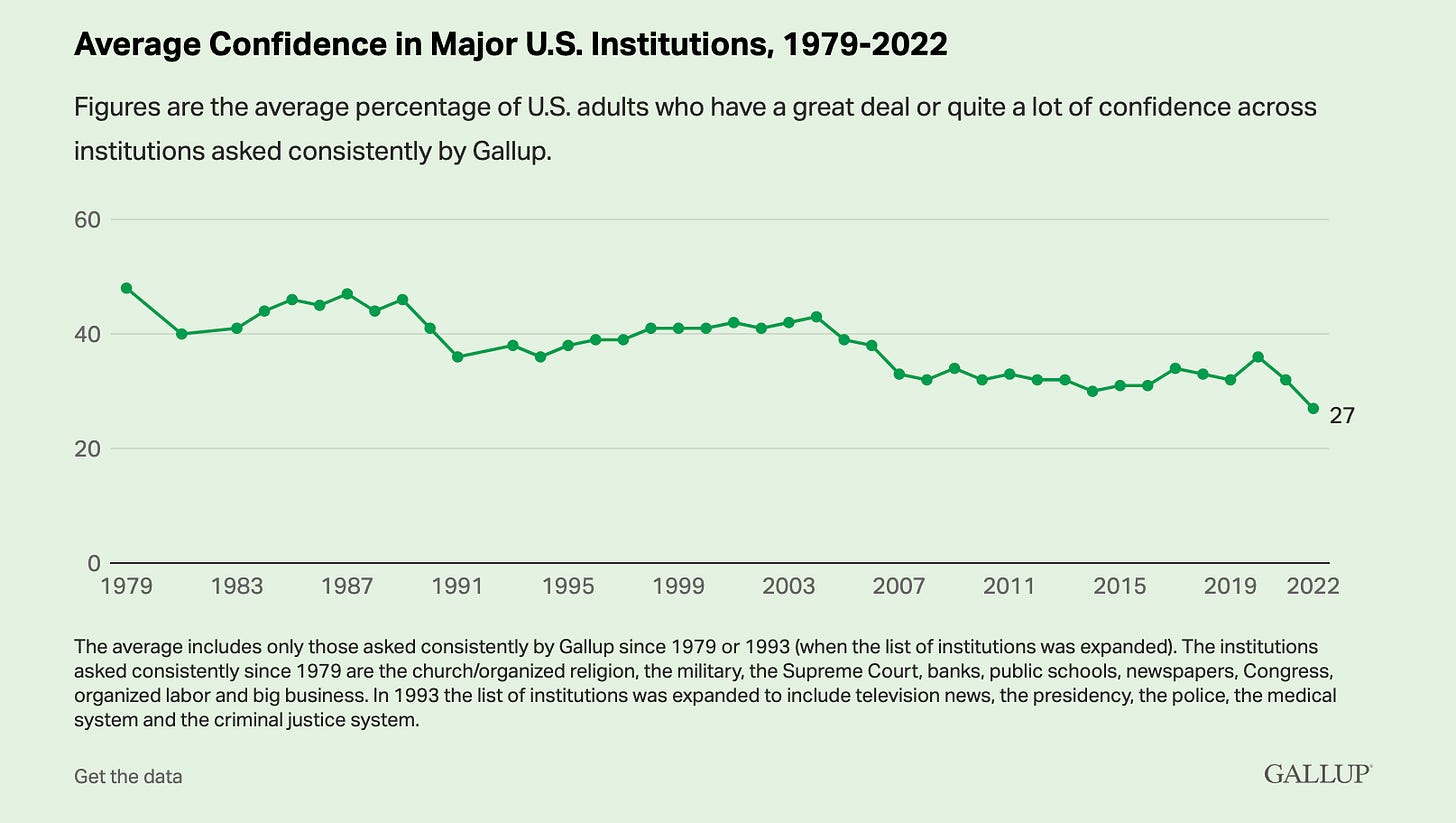Seismic Waves of Gen Z Behavior
Three Generational Shifts Shaping Technology & Culture
Weekly writing about how technology shapes humanity, and vice versa. If you haven’t subscribed, join 45,000 weekly readers by subscribing here:
Seismic Waves of Gen Z Behavior
When I think about long-term, transformative change in a startup context, I often use the analogy of seismic waves. Seismic waves are waves of acoustic energy that travel through the Earth; most of us probably associate them with earthquakes. Those of us who took Earth Science (at my school, affectionately known as “Rocks for Jocks”) might remember diagrams of “S-waves” rippling through the Earth’s crust after a quake. These are the seismic waves—waves that create tremendous disruption and change.
In the startup world, there are seismic waves of technology and there are seismic waves of human behavior. On the technology front, AI is the clearest wave right now. Mobile and cloud, meanwhile, were technology waves that powered much of the past 15 years of startup innovation.
Waves of human behavior are fundamental shifts in how we think and act and consume as a society. I named this newsletter Digital Native because these shifts are especially present in younger generations—the people who have never known a world without technology. (Today’s high school sophomores were born the same year as the iPhone; today’s high school juniors were born the same year as AWS.)
The biggest startup success stories—the tech companies that reinvent everyday life—combine seismic waves in technology and behavior. How can shifts in human behavior interact with technological change to create something new and game-changing? Three examples—
Robinhood rode a technology shift (mobile) that intersected with behavior shifts around people becoming more financially educated, motivated, and independent in a post-Great Recession era.
Instagram also rode the rise of mobile, including rapidly-improving smartphone cameras. At the same time, people were learning to live more public lives, build parasocial relationships, and cultivate global communities / social graphs untethered from geographic constraints.
Figma, meanwhile, rode a technology shift in WebGL (released in 2011, WebGL let you render interactive graphics in the browser) alongside the increasing importance of design in a digital world and the expanding definition of “designer”—online, everyone was becoming a designer.
Seismic waves are a helpful framework for thinking through early-stage venture investing. When it comes to venture capital, I’ll always take a founder-first approach; there’s no substitute for an extraordinary entrepreneur who sees the world differently. The best entrepreneurs are living in the future. But the biggest companies are built when such a founder meets a seismic wave.
Last week’s piece was about AI interfaces—a technological wave—so this week’s piece will focus on waves in human behavior. These are shifts in Gen Z’s worldviews, attitudes, and preferences, and each shift will power a number of generational startups over the coming years. I’ll focus on three waves:
Sustainability: Climate tech is booming, a rare bright spot in the tech downturn. But I’m just as interested in how the squishier word “sustainability” bleeds into consumer behaviors—how we shop, how we eat, the jobs we work.
Mental Health: Mental health is (finally) becoming less stigmatized. At the same time, mental healthcare is becoming more accessible than ever. This timing is crucial, as younger generations are in the midst of a full-blown mental health crisis.
Digitally-Native Jobs: We’re seeing a revolution in work, as young people seek the flexibility, autonomy, and economic promise of new forms of work built on the internet. This is changing how we work and how we interpret the fundamental meaning of a career.
Importantly, although these build on consumer behaviors, these aren’t exclusively “consumer” phenomena. Each seismic wave will underpin both business-to-consumer and business-to-business companies. Business models will be varied, but they’ll all build on decades-long shifts in how people act.
Let’s dive in.
Sustainability
In 2021, venture funding into climate technology swelled to a record $37B, +64% over 2020. And last year, as the broader funding market cooled, that growth actually accelerated: according to HolonIQ, climate tech startups raised $70.1B in 2022, +89% year-over-year.
PWC reported that $1 in every $4 of venture capital funding last year went into climate tech.
This is impressive, and I’m excited about possibilities in core climate tech; our planet needs it. But what’s also interesting to me is the broader shift happening—one that goes beyond solar panel manufacturers and carbon capture startups. This is a behavioral shift to living more sustainably, and we see it showing up in how young people go about their day-to-day lives.
One example: sustainable commerce.
It turns out that retail is very, very bad for the environment. Retailers are responsible for about 25% of global carbon emissions. Scientists estimate that, globally, 35% of the microplastics found in oceans can be traced to textiles. And while young people are showing a penchant for SHEIN (the proof: 11 years straight of 100%+ year-over-year growth), 95.2% of SHEIN clothing contains new microplastics. Yikes.
In February’s The Retail Revolution, I wrote about how this problem has gotten out of hand. The Great Pacific Garbage Patch, which covers 1.6 million square kilometers in the Pacific Ocean between Hawaii and California, is growing exponentially, swelling 10x each decade since 1945. Most clothes today end up in a landfill, leading to absurd outcomes: in 2017, a Swedish power plant abandoned coal as a source of fuel, instead choosing to burn mountains of discarded clothing from H&M 🤦♂️
Something’s gotta give—and consumers want change: according to McKinsey/Nielsen, 78% of people want to shop sustainably.
I tend to break commerce into three buckets, and we’re seeing new solutions in each.
On the shopping experience side, startups like Beam (a company I work with) are embedding sustainability into checkout. Consumers can donate 1% of their cart to an important cause—say, protecting our forests like in the below example with Aday—and the brand will foot the bill. Brands are willing to do this because average order values go up 15%, conversion improves 11%, and cart abandonment rates drop 17%. Building sustainability into the retail experience is becoming tablestakes.
We also see consumers gravitating to sustainable products: Everlane in apparel; Allbirds in footwear; Beautycounter in cosmetics. Savvy brands know this is where the world is heading: according to a First Insight report, nearly 90% of consumers say they would be willing to spend an extra 10% or more for sustainable products, up from just 34% of consumers two years ago.
And finally, this carries over to supply chain. That same McKinsey/Nielsen study found that 60% of consumers are willing to pay more for sustainable packaging. Startups are emerging here: Impacked Packaging is a B2B wholesale marketplace built around sustainability, and Sourceful helps “climate-conscious brands” design and order sustainable packaging.
It’s not just shopping that’s affected by younger generations’ shift to sustainable living. How we eat is changing: Gen Zs and Millennials are more likely to eat plant-based meat alternatives from companies like Impossible Foods ($1.9B raised), Beyond Meat ($122M raised, now public), and Simulate ($57M raised; maker of Nuggs, plant-based chicken nuggets).
How we travel is changing: younger folks are much more likely to eschew air travel, or to personally offset carbon footprints using apps like Joro. And even how we get buried is changing. Cremation recently passed the 50% threshold to become America’s leading form of post-death…disposal (I tried to find a nice way to say that):
But it turns out that cremation is dirty: cremating one body is about equivalent to taking a flight from San Francisco to Los Angeles and back. To many people (and especially to many young people) that’s anathema: how could you make your last act on Earth an act of pollution?
Greener alternatives are emerging. The startup Earth, for instance, offers to “return you to nature” through a soil transformation process—in other words, Earth runs a composting process that turns your body into nutrient-rich soil. Many people are opting for soil transformation as an alternative to cremation—and if it catches on, the above chart may end up looking quite different by 2035.
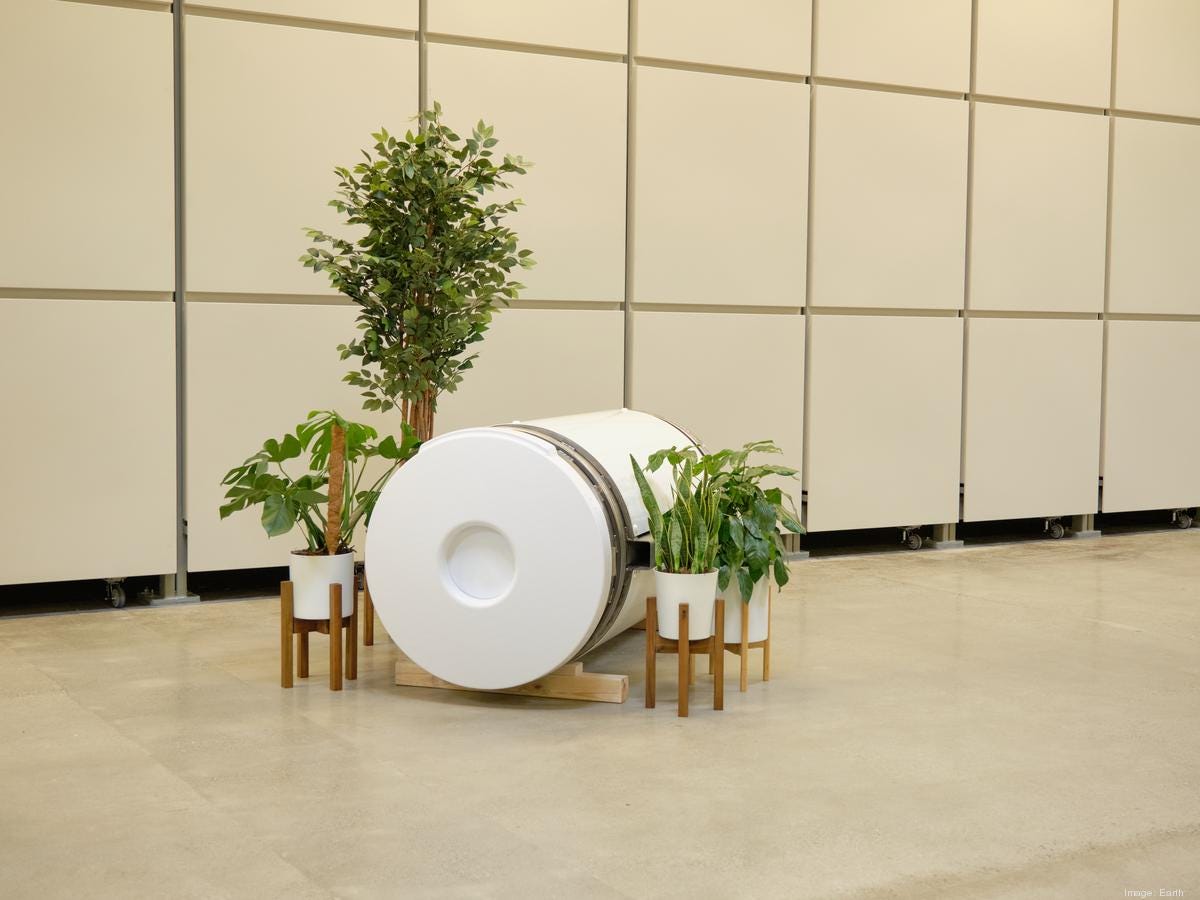
These are consumer-facing examples. But we’re also seeing B2B businesses emerge to help enterprises become sustainable. I tend to also break this down into three core buckets (I guess I like frameworks of three):
Companies need to 1) figure out their carbon footprint, 2) figure out ways to offset that footprint, and 3) assess the quality of those offsets. Watershed is an example of a startup helping companies like Sweetgreen and Airbnb measure their footprint. Patch is a marketplace helping companies find carbon credits to buy. And Sylvera is a startup that offers carbon credit ratings—sort of like Fitch or Moody’s for carbon credits—to help big companies like Chevron and Delta understand the quality of the credits they’re purchasing.

Smart enterprises have gotten ahead of the curve here, understanding that regulation is around the corner. Disney, for instance, recently announced its intention to get to net-zero emissions by 2030. Europe, for its part, is a few years ahead of the U.S.
But across the Western world, this will soon be mandatory for all businesses. Both on the consumer side and on the enterprise side, we’re seeing a massive shift to sustainability that will radically change markets ranging from retail to food to carbon credits.
Mental Health
Mental health fascinates me. Specifically, I’m fascinated by how taboo the topic is in Western culture. Growing up, my dad would tell me, “Having a mental illness is no different than having a broken arm—it needs medical treatment, and it’s nothing to be ashamed of.”
Most of Americans, unfortunately, don’t share the same view; there’s long been a strong stigma surrounding mental health. That’s beginning to change. One study found that overall public stigma towards depression has decreased sharply: in 2006, one in three people expressed an unwillingness to socialize with someone with depression; by 2018, that was down to less than one in five. Progress. Unfortunately, the study found that the same destigmatization didn’t carry over to schizophrenia or alcohol dependence.
Gen Z is leading the way on breaking down stigmas. Spend time on TikTok, and you’re bound to come across young people espousing the benefits of therapy and using “therapy-speak” in videos about stress, anxiety, and depression. There’s good reason for the dialogue around mental health: young people are in an all-out mental health crisis. Among people 18 to 34, 43% report being “very concerned” about their mental health.
Nearly 1 in 5 teenagers and young adults experienced a major depressive episode in the last year—that’s three-fold the share of people age 26 and up.
Last week, I wrote about how people are turning to AI chatbots for companionship. While chatbots shouldn’t outright replace therapists, there’s promise here—79% of Gen Z (and 61% of American adults overall) report feeling lonely. AI startups like Woebot are offering mental health chatbots to combat loneliness and offer mental health support:
Therapy is also becoming more accessible, with COVID alleviating strict regulations around teletherapy and with insurance more often covering mental health. Companies like Headway are leading the way on the startup side. Headway is a unique business model. For the consumer, Headway is a way to quickly find a therapist—ideally, one covered by your insurance. In this way, Headway acts like a typical B2C marketplace. On the therapist side, though, Headway abstracts away all the headaches of running your own practice—credentialing, finding patients, claim submission, payment. In this way, the platform offers an end-to-end vertical software + fintech suite for therapists.
One other interesting (though relatively new) area: psychedelic-assisted psychotherapy. Study after study shows promising results for PAP. Journey is a NYC-based startup that’s starting with ketamine-assisted psychotherapy. Here’s how the business model works:
Journey’s in-house team handles eligibility, prescriptions, and outcome monitoring. Member psychotherapists, meanwhile, administer the treatment to patients.
There’s a lot happening as mental health becomes less stigmatized and more accessible: more dialogue on TikTok; AI chatbots making us less lonely; teletherapy breaking down barriers; and new modes of healthcare delivery just getting going. As a broad seismic wave over the next decade, “mental health” should birth a number of important companies that serve young people looking to better understand and improve mental well-being.
Digitally-Native Jobs
In 2027, America is set to become a freelance-majority workforce.
Here’s one visualization of America’s freelance boom, though take it with a grain of salt as it comes from the freelance platform Upwork:
Here’s a more objective view from Statista; freelancers are expected to swell from 73M this year to 90M by 2028 (37% CAGR):
I’ve written about this phenomenon before, including covering some of the individual success stories on internet platforms. Bella McFadden became the first person to make over $1M on the Gen Z-focused secondhand marketplace Depop, selling 67,411 items and amassing 380,000 followers. Miss Excel built an Excel course, marketed it through funny TikTok videos (917K followers), and now earns up to $100K a day.
And MeganPlays is one of the most successful developers on Roblox, with her game studio now grossing over $8M a year. In total, Roblox developers are earning north of $500M per year.
In last fall’s The Rise of the Digitally-Native Job, I wrote about how many of the biggest technology companies create ecosystems around themselves. They employ many more people off their balance sheet than on their payroll expense line item. Amazon, for instance, has 1.6M employees but supports 9.5M sellers on its marketplace. Etsy has 7,500 employees, but 7.5M sellers. And while 2,000 people work at YouTube, over 320K YouTube channels have over 100K subscribers. These are some of my favorite business models: scalable micro-economies that support millions of workers, create enormous value, and become generational companies.
A new generation of up-and-coming online work platforms will carry this forward. You can be a gaming coach on Metafy, a career coach on Leland, a dietitian on Nourish. One of my friends recently started selling access to a sneaker bot he built on Whop, a company that offers a Shopify-like infrastructure for digital product businesses (IP proxies, software bots, paid communities). He sells it for $30 a pop, and over a thousand people have already bought it. He might quit his job and live on passive income.
Work is disaggregating, with more people eschewing “traditional” careers in favor of self-driven, online alternatives. In a poll of Gen Zs, 42% said they want to have their own business—10 percentage points higher than any other generation.
It’s interesting to think through the causal factors here. One root cause: this is a generation that came of age in the aftermath of the Great Recession, in the midst of COVID-related labor shocks, and in a time of unprecedented income inequality. Young people don’t want to work for “the man” for little economic upside.
We’re also seeing a decades-long decline in the trust Americans place in institutions and corporations: Pew Research shows that trust in government, media, organized religion, corporations, the police, and the criminal-justice system are all declining. Average confidence in major institutions is down from 50% in 1979 to 27% in 2022.
Americans are putting more trust in themselves; they would rather trust in their own skill and hard work, and the internet gives them the opportunity to earn a living this way. Millennials were just as disillusioned as Gen Zs when it came to corporate America, but Millennials came of age in a time when technology wasn’t yet ready to offer an alternative. Now, there are hundreds of “digitally-native jobs” that people can turn to. This reinvents how we work and how we think about the meaning of a career.
Final Thoughts
Seismic waves tend to have ripple effects. The rise of digitally-native work, for instance, has second-order effects on education. Does college hold the same importance in a world of internet-born labor? (No.)
It’s interesting to follow the chain reactions from waves. I find this a productive exercise for thinking through where future value creation lies. An example: less stigma around mental health → increased demand for therapy → pressure on government and businesses to improve access to the supply-side (therapists) → more people find work as therapists → need for software and fintech products to support more people earning a living this way. There are a half-dozen business needs stemming from this one seismic wave of destigmatizing mental health.
There are many more examples of seismic waves in human behavior—talk to any young person for 30 minutes, and you’ll pick up on at least three. I’d be interested in hearing what waves other people see coming.
What’s always fascinated me about the startup world is how emerging companies can both build on and accelerate new human behaviors. Every generation brings with it massive shifts in how we act, and this is especially true in a generation as radically different as the digital natives.
Studying seismic waves offers a framework for assessing where radical disruption lies—and for startups, following the path to large-scale disruption leads to the path to large-scale value creation.
Related Digital Native Pieces
Thanks for reading! Subscribe here to receive Digital Native in your inbox each week:






